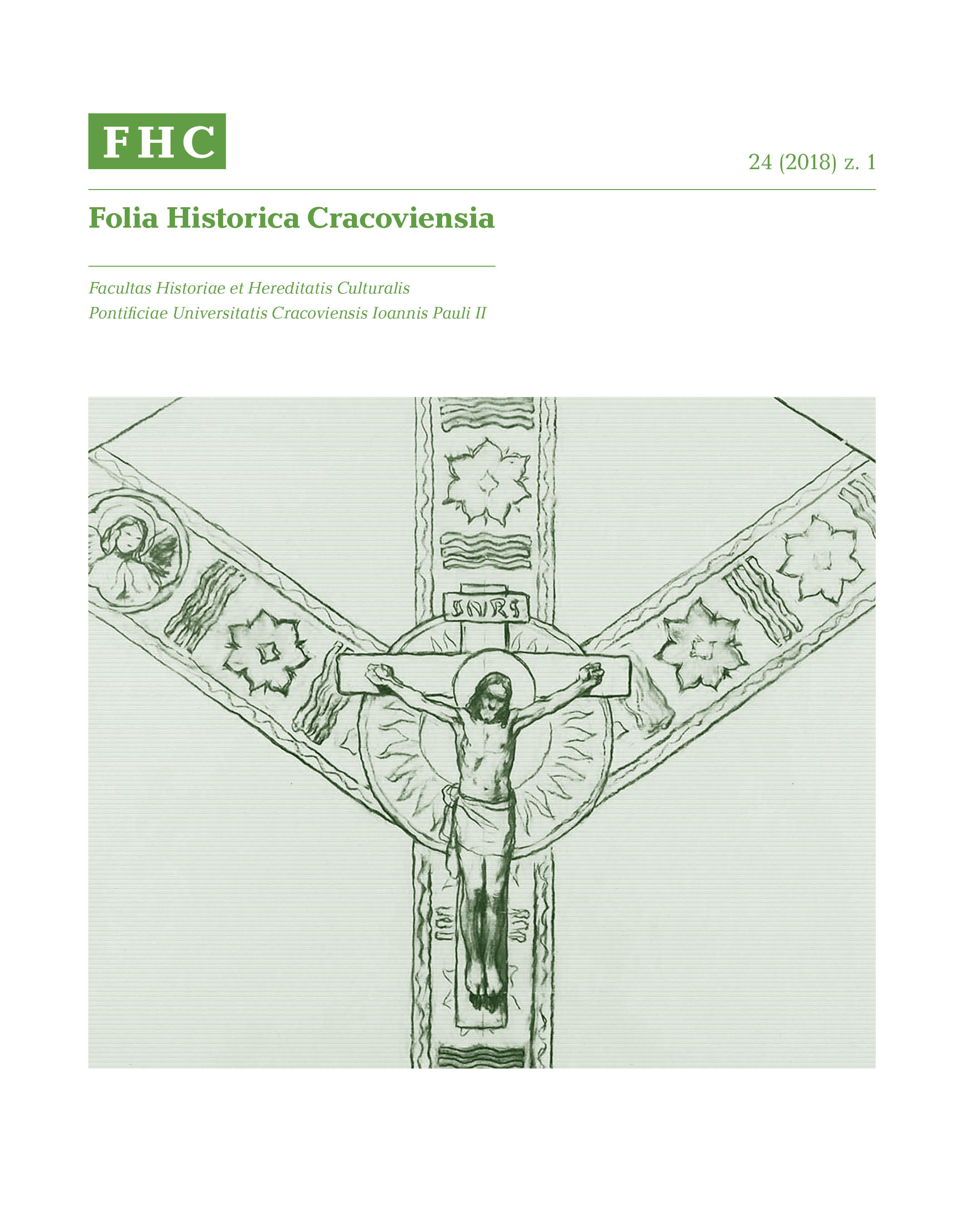Zabytkowe hafty norbertanek żukowskich. Stan badań po czterdziestu latach
DOI:
https://doi.org/10.15633/fhc.3319Słowa kluczowe:
hafciarstwo, warsztaty klasztorne, szaty liturgiczne, Żukowo, norbertankiAbstrakt
Haftom sióstr norbertanek z Żukowa, najciekawszym przykładom tego rodzaju rzemiosła artystycznego na obszarze dawnych Prus Królewskich, poświęcono jak dotąd bardzo niewiele miejsca w literaturze fachowej. Doczekały się jednego tylko poważnego artykułu autorstwa Barbary Kaźmierskiej-Latzke, niestety mało znanego, opublikowanego w 1976 roku w niszowym, krótko wydawanym łódzkim biuletynie „Centralne Muzeum Włókiennictwa”. Pozostałe opracowania, głównie o charakterze etnograficznym i popularnonaukowym, wspominają jedynie zabytki z żukowskiego kościoła na marginesie rozważań na temat haftu kaszubskiego. Ich autorzy na szczęście już coraz rzadziej próbują udowadniać wpływ sztuki ludowej na hafty klasztorne, mimo to jednak wciąż marginalizują rolę zakonnic w kształtowaniu się kaszubskiego ornamentu. W tej sytuacji niezbędna wydaje się rzetelna publikacja na temat haftów wykonanych przez norbertanki, tym bardziej że liczba zachowanych obiektów wciąż się zmniejsza i coraz więcej znamy już tylko ze zdjęć archiwalnych. Z dziewięćdziesięciu jeden zabytków haftowanych przetrwało w parafii pw. Wniebowzięcia NMP w Żukowie jedynie dwadzieścia jeden paramentów (większość skradziono w 1989 roku). Wydanie katalogu szat liturgicznych z pracowni norbertanek z uwzględnieniem dokumentacji fotograficznej sprzed 1989 roku mogłoby pomóc w odnalezieniu skradzionych dzieł, a opracowany i przeanalizowany materiał stanowiłby znakomity punkt odniesienia dla badaczy zajmujących się podobną problematyką. Jednocześnie pozwoliłoby to na bliższe określenie zakresu oddziaływania warsztatu hafciarskiego sióstr norbertanek i powiązanie z nim większej liczby zabytków.
Bibliografia
Bedeker kaszubski, red. R. Ostrowska, I. Trojanowska, Gdynia 1962.
Belgrau J., Norbertańskie dzieje Żukowa, Żukowo 2012.
Czaplewski P., Annales Monasterii Oliviensis ord. Cist. Aetate posteriores, cz. 1, Toruni 1916.
Dzieje Żukowa, red. B. Śliwiński, Żukowo 2003.
Fankidejski J., Klasztory żeńskie w dyecezyi chełmińskiej, Pelplin 1883.
Frankowski E., Złotogłowie kaszubskie, „Polska Sztuka Ludowa” 8 (1954) nr 3, s. 148–161.
Grzędzicki A., Żukowo, Gdańsk 1989.
Kaźmierska-Latzke B., Hafty, tkaniny jedwabne, płótna lniane drukowane ze skarbca w Żukowie, „Centralne Muzeum Włókiennictwa” 1976, s. 47–110.
Kaźmierska-Latzke B., Katalog zabytkowych tkanin i haftów w Żukowie, t. 1-2, Poznań 1978 (maszynopis przechowywany w zbiorach Narodowego Instytutu Dziedzictwa Narodowego w Gdańsku).
Kościół Mariacki w Żukowie. Zabytki sakralnej kultury artystycznej dawnego klasztoru Norbertanek, tekst: K. M. Kowalski, Żukowo 2012.
Norbertańska siła Kaszub, red. A. Groth, E. Pryczkowski, Banino 2011.
Okroy F. K., Dzieje klasztorów norbertańskich w Żukowie, Toruń 1951 (Żukowo 2010).
Ornamenta Ecclesiae Poloniae. Skarby sztuki sakralnej wiek X–XVIII, kat. wyst., Zamek Królewski w Warszawie, 15.05.–8.08.1999, red. P. Mrozowski, A. Badach, Warszawa 1999.
Pagaczewski J., Gobeliny polskie, Kraków 1929.
Pryczkowski E., Leksykon Ziemi Żukowskiej, Banino-Żukowo 2012.
Seweryn T., Kaszubskie złotogłowie i nowe hafty wdzydzkie, Lwów 1929 (Towarzystwo Ludoznawcze, Seria 2, t. 8).
Stanilewicz K., The role of monastic embroidery workshops in the formation of the early modern Polish embroidery, „Folia Historica Cracoviensia” 22 (2016), s. 467–482.
Stelmachowska B., Sztuka ludowa na Kaszubach, Poznań 1937.
Szczypkówna M., Hafty żarnowieckie, „Zeszyty Naukowe Uniwersytetu im. A. Mickiewicza w Poznaniu. Historia Sztuki” 1960, z. 2, s. 159–227.
Szołdrski W., Miscellanea żukowskie, Kraków 1957.
Pobrania
Opublikowane
Numer
Dział
Licencja
Autorzy publikujący w czasopiśmie udzielają jego wydawcy zgody o następującej treści:
- Autor zachowuje autorskie prawa majątkowe do utworu, a jednocześnie udziela wydawcy czasopisma zgody na jego pierwszą publikację w wersji drukowanej i wersji online na licencji Creative Commons Uznanie autorstwa 4.0 Międzynarodowe oraz zgody na wykonywanie opracowań, w tym przekładów.
- Autor ma możliwość udzielania zgody niewyłącznej na opublikowanie utworu w wersji, która ukazała się w czasopiśmie (np. zamieszczenia go w repozytorium instytucjonalnym lub opublikowania w książce), wraz z informacją o jego pierwszej publikacji w czasopiśmie.
- Autor może umieścić swój utwór online (np. w repozytorium instytucjonalnym lub na swojej stronie internetowej) jeszcze przed zgłoszeniem utworu do czasopisma.

